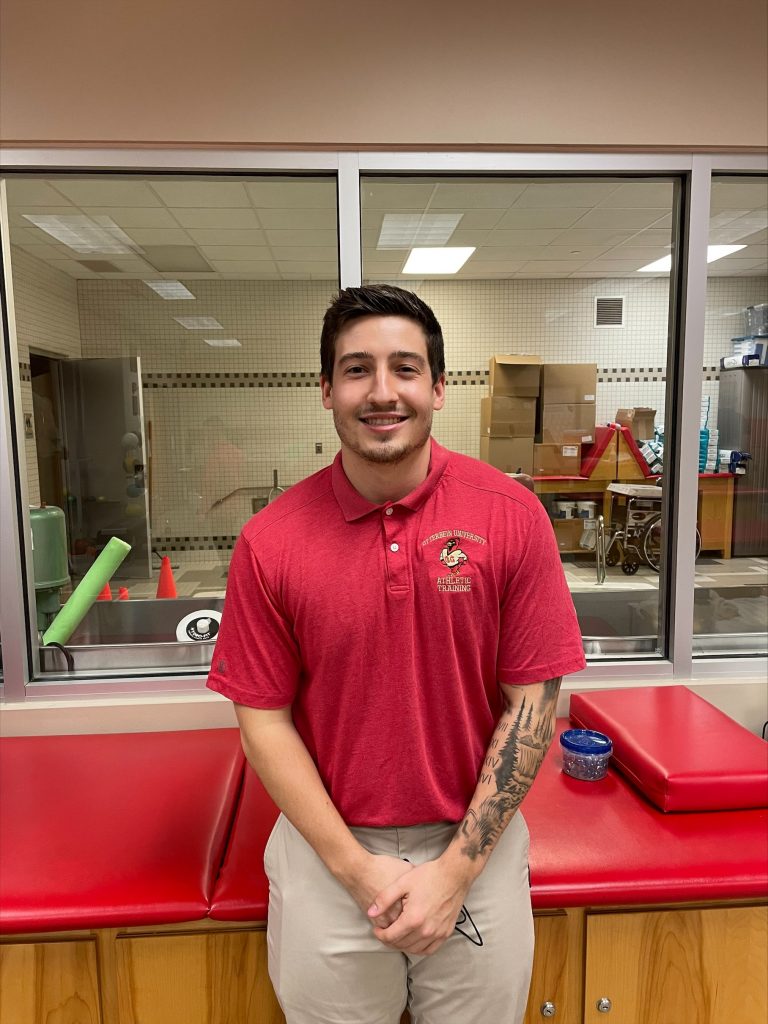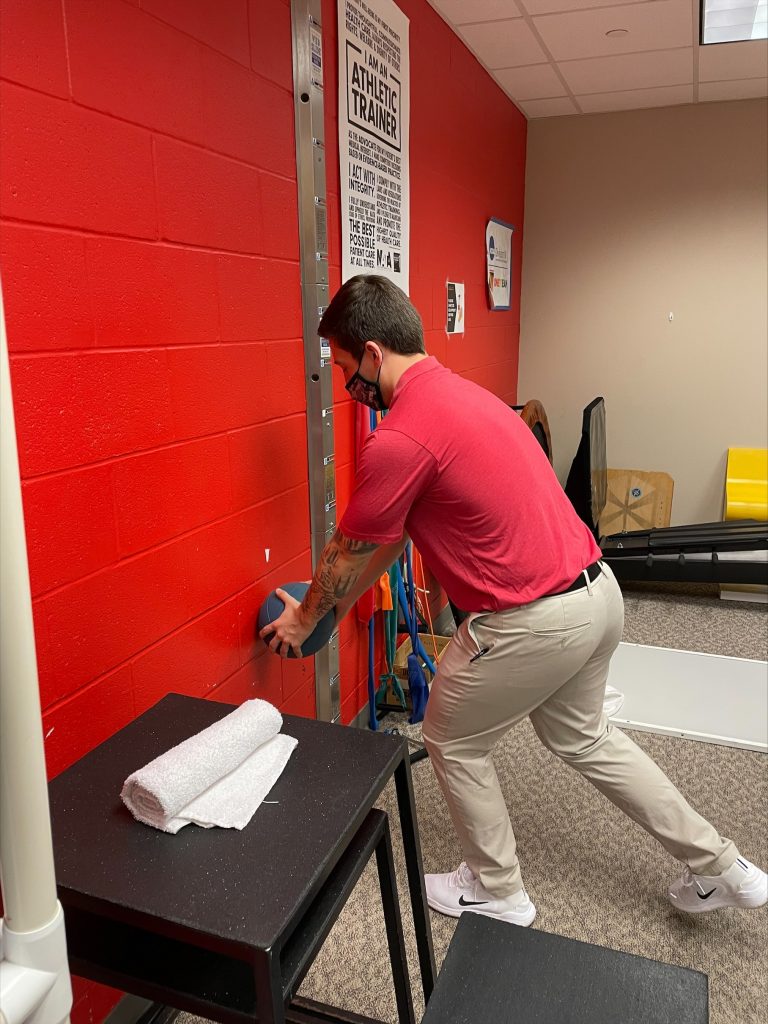Otterbein Senior Athletic Training Student Reverses Misconceptions
Posted Nov 16, 2021
By Payton Kaufman ’24
Unsure of which field he wanted to enter, senior Cameron Lowther was introduced to athletic training on his visit to Otterbein and he never turned back. Joan Rocks, the athletic training program director, met with Lowther and took the time to explain the nature of athletic training.

Rocks was successful and Lowther is completing his degree in athletic training this year with plans to attend physical therapy school in the future.
“I liked the fluidity of athletic training,” Lowther said. “I am not stuck behind a desk, nor am I running around a hospital, but it’s in-between the two careers.”
In the classroom, Lowther is taught by certified athletic trainers. He also gains hands-on experience through different rotations – both at Otterbein and other local universities – each semester from sophomore to senior year.
Lowther separates his rotation work into two domains: practice and rehabilitation. The practice side involves taping, water, and stretching prior to training. For rehabilitation, he valuates their injury and address the deficits they are having. He will then develop a rehab plan to address those areas.
When Lowther began classes, there was a misconception that an athletic trainer’s duties extends to getting water or helping injured athletes of the field. Quickly, he learned there was much more to it.
“Athletic trainers know a lot about health promotion, injury prevention, and how to take care of yourself. The education piece of athletic training is much more than I anticipated,” Lowther said.
Currently, Lowther is completing a rotation with Angelo Lamatrice, a physical therapist and licensed athletic trainer. Lamatrice said that the health education part of athletic training is important factor in athlete health.
“A big part of everything we do is education,” Lamatrice said. “It is important for compliance – if athletes understand why we ask them to do what they do, they’re more likely to do it.”

Otterbein athletic trainers serve another role, as well. They are the first contact point for any health issues among student athletes, Lamatrice said.
“We are the first line of healthcare providers for our athletes,” Lamatrice said. “We encounter problems beyond sprained ankles where we have to refer athletes to cardiologists, for example.”
Athletic trainers need to be educated in so many areas of health and wellness, in addition to sports and injuries. Fitting all that information into a classroom or textbook is impossible. An Otterbein education gives athletic training students the opportunity to work in a professional setting, gaining those skills along the way.
“There is only so much you can learn in a classroom-setting,” Lowther said. “To get out and gain hundreds of hours of experience by the time you graduate is a big deal.”